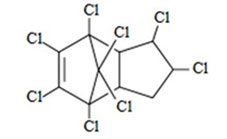 What is Chlordane?
What is Chlordane?
Chlordane, is an organochlorine compound used as a pesticide. It is a white solid. In the United States, chlordane was used for termite-treatment of approximately 30 million homes until it was banned in 1988.
Uses
Chlordane was used as a pesticide in the United States from 1948 to 1988. In 1988, all approved uses of chlordane in the United States were canceled. From 1983 to 1988, chlordane’s only approved use was to control termites in homes. The pesticide was applied underground around the foundation of homes. Before 1978, chlordane was also used as a pesticide on agricultural crops, lawns, and gardens and as a fumigating agent. In 1978, EPA canceled the use of chlordane on food crops and phased out other aboveground uses over the following 5 years.
Sources & Potential Exposure
Before 1988, exposure to chlordane may have occurred in the workplace; persons involved in the manufacture, formulation, or application of chlordane, such as farmers, lawn-care workers, and pest control workers may have been exposed. Currently, exposure to chlordane appears to be highest for those persons living in homes that were treated for termites with chlordane. Chlordane may be found in the air in these homes for many years after treatment. Additional exposure to chlordane may occur from digging in soil around the foundation of homes where chlordane was applied. Mean residue levels in soil around 30 homes treated with chlordane ranged from 22 to 2,540 parts per million (ppm).
The acute (short-term) effects of chlordane in humans consist of gastrointestinal distress and neurological symptoms, such as tremors and convulsions. Chronic (long-term) inhalation exposure of humans to chlordane results in effects on the nervous system. An occupational study reported an association between chlordane exposure and non-Hodgkins’s lymphoma, while other human studies did not show an association between chlordane exposure and leukemia or multiple myeloma. Animal studies have reported liver cancer in mice and male rats exposed to chlordane via ingestion.
Federal regulations
EPA has classified chlordane as a Group B2, probable human carcinogen.
Chlordane has also been listed as a pollutant of concern to EPA’s Great Waters Program due to its persistence in the environment, potential to bio accumulate, and toxicity to humans and the environment.

 Americas
Americas Europe
Europe Français
Français Deutsch
Deutsch Italiano
Italiano Español
Español



